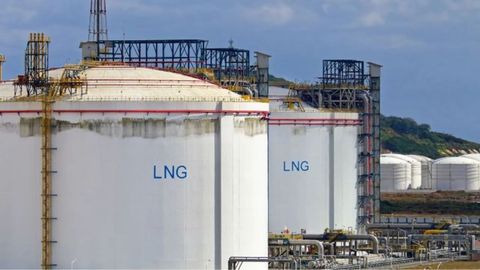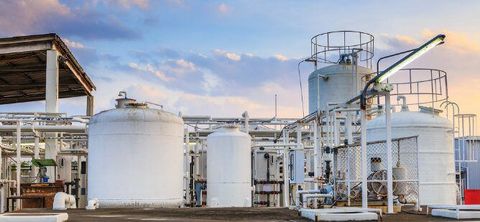A Comprehensive Guide to Industrial Data Analytics Systems: Facts, Details, and Applications
Industrial Data Analytics Systems are specialized platforms that collect, process, and analyze large volumes of data generated by machines, sensors, and industrial operations. They exist to help industries make data-driven decisions, improve performance, and reduce inefficiencies.
As industries adopt automation and smart manufacturing, the amount of data produced in real-time has increased exponentially. Industrial analytics systems translate this data into meaningful insights—enabling better planning, maintenance, and process optimization.
These systems combine elements of Industrial Internet of Things (IIoT), cloud computing, artificial intelligence (AI), and machine learning (ML) to create intelligent manufacturing and operational ecosystems.

Importance
Industrial data analytics has become a cornerstone of modern industrial management. It matters today because it transforms raw data into actionable intelligence. Some key reasons include:
-
Operational Efficiency: Real-time monitoring and analytics help reduce downtime and improve equipment performance.
-
Predictive Maintenance: Data analytics predicts potential equipment failures before they occur, preventing costly interruptions.
-
Quality Improvement: Analytical models detect inconsistencies or anomalies in production, improving product quality.
-
Sustainability: Analytics systems help optimize resource use, reduce waste, and monitor environmental impact.
-
Informed Decision-Making: With access to accurate data insights, managers and engineers can make better operational and strategic choices.
Industries most affected include manufacturing, energy, oil and gas, logistics, pharmaceuticals, and utilities. These sectors rely heavily on accurate and continuous data monitoring to maintain safety, quality, and efficiency.
Recent Updates
From 2024 to 2025, industrial data analytics has experienced several key technological and strategic developments:
-
Edge Analytics (2024): More industries are processing data directly at the source rather than in centralized servers, reducing latency and improving real-time decision-making.
-
AI-Powered Insights (2025): Artificial intelligence models are increasingly used to forecast performance, detect anomalies, and automate responses without human intervention.
-
Integration with Digital Twins (2025): The use of digital twin technology—virtual models of real-world systems—has expanded for testing and simulation purposes.
-
Cloud and Hybrid Platforms (2024): Hybrid cloud adoption allows companies to balance data security with accessibility across multiple locations.
-
Data Governance Focus (2025): As more data is collected, organizations are emphasizing standardized governance and cybersecurity to ensure compliance with privacy regulations.
Global studies indicate that industrial analytics adoption is accelerating due to its proven impact on reducing operational downtime and enhancing asset performance.
Laws or Policies
Industrial data analytics is shaped by several national and international regulations related to data management, security, and industrial standards:
-
General Data Protection Regulation (GDPR – European Union): Ensures responsible handling of personal and operational data within analytics systems.
-
Cybersecurity Laws: Countries like the United States and Japan have introduced stricter cybersecurity requirements for industrial systems to prevent data breaches and cyberattacks.
-
ISO 27001 and ISO 9001 Standards: Provide guidelines for data security and quality management in industrial operations.
-
Industrial IoT Frameworks: Many governments have published national strategies to promote Industry 4.0 adoption, emphasizing the ethical and secure use of analytics tools.
-
Environmental Data Regulations: Industries in regions such as the EU and Asia are required to monitor and report emissions data, which relies heavily on analytics systems.
These laws aim to balance technological innovation with data protection, sustainability, and operational safety.
Tools and Resources
There are multiple tools and platforms that support industrial data analytics. They range from cloud-based systems to on-site analytical software. Some widely recognized resources include:
-
Analytics Platforms:
-
OSIsoft PI System: Popular for collecting and analyzing operational data from industrial sensors.
-
Siemens MindSphere: A cloud-based analytics platform designed for industrial IoT integration.
-
Azure IoT and AWS IoT Analytics: Provide scalable cloud infrastructure for managing and visualizing industrial data.
-
-
Data Visualization Tools:
-
Tableau and Power BI: Help create visual dashboards for real-time data interpretation.
-
Grafana: An open-source tool for monitoring time-series data from industrial systems.
-
-
Predictive Maintenance Software:
-
Uses machine learning models to anticipate failures and schedule maintenance proactively.
-
-
Learning Resources:
-
Coursera and edX: Offer online courses on industrial analytics, IIoT, and predictive modeling.
-
Government and research reports: Provide updated information on data policies and industrial transformation.
-
These tools collectively make industrial environments smarter, safer, and more connected.
FAQs
What is industrial data analytics used for?
Industrial data analytics is used to process data from equipment and operations to improve efficiency, predict failures, optimize maintenance, and ensure quality control.
How is industrial data analytics different from traditional data analysis?
Traditional data analysis focuses on static or historical data, while industrial analytics deals with real-time operational data from machines, sensors, and connected devices.
What are the key components of an industrial analytics system?
Typical components include data acquisition systems, cloud or edge computing platforms, AI/ML algorithms, visualization dashboards, and data governance tools.
Can small industries also use industrial analytics systems?
Yes. Scalable and cloud-based platforms allow even small and medium-sized enterprises to adopt analytics without large infrastructure investments.
What are the main challenges in implementing industrial data analytics?
Common challenges include data integration from diverse systems, ensuring cybersecurity, maintaining data quality, and training staff to interpret analytics outputs.
Conclusion
Industrial Data Analytics Systems are revolutionizing how industries operate, monitor, and optimize performance. By leveraging advanced technologies like AI, IoT, and cloud computing, these systems enable real-time insights that improve productivity, safety, and sustainability.
The growing integration of edge analytics, digital twins, and data governance frameworks shows that analytics is no longer just a technological trend—it is a fundamental part of modern industrial strategy.





